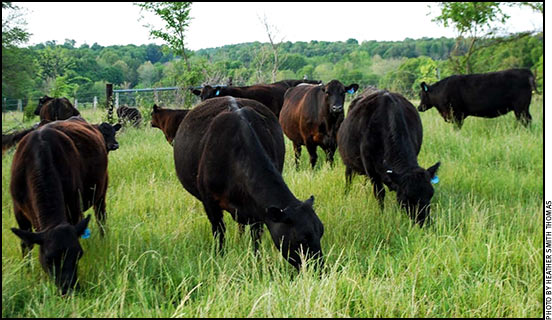
Keeping Balance
Keep grass and grazing animals in proper balance.
Grass and grazing animals evolved together in symbiotic relationships — each needing the other — in various grasslands around the world. The healthiest situation is to have grazers on the land in proper balance with their feed source.
Richard Teague, Texas A&M AgriLife Research rangeland ecology and management scientist in Vernon, Texas, says his goal in research is to discover what kind of management of rangeland results in the best means of restoring ecological function and sustaining farm/ranch livelihoods.
“For sustainable use of ranch lands, the key things to avoid are first overstocking and then overgrazing. Some people confuse those two things. To avoid overstocking you must make sure you don’t have too many animals; that you leave enough grass to feed the animals and to perform the ecosystem functions like shading the soil, etc. You also must avoid overgrazing, which occurs when you graze too long and don’t provide enough recovery time. No matter what the conditions are, you must try to avoid those two situations,” says Teague.
Many people believe that by just having a few animals on the landscape you can achieve those goals. However, those few animals generally return to the same plants again and again, and the favorite plants get no recovery time.
If left to graze where they want, the animals graze fairly close to a water source until it’s grazed out and they have to move farther away, he says. Also, they tend to graze some plants again and again, often to the point of weakening and killing them, leaving the less palatable ones.
Even under light or moderate stocking, these areas are more heavily grazed while the rest of the paddock is under-grazed. This weakens the heavily grazed plants; they have shallower roots, produce less biomass and are thus more adversely affected during dry years, he explains.
If pastures are divided and water points provided, a larger portion of the ranch or range can be utilized with only moderate defoliation in the growing season. Additionally, grazed areas of the pasture get rest and are able to recover.
“Even with low stocking rates, if livestock are continuously grazing the same area, they diminish and degrade certain patches of vegetation. Eventually those degraded patches increase in size, particularly during drought, so that eventually the whole landscape is degraded. If you have too many animals there all the time, it simply speeds up that process,” he explains.
With well-managed adaptive multi-paddock grazing, plants have more recovery time and the vegetation is mainly taller, more productive grasses. With heavy continuous grazing, the landscape is dominated by less productive short grasses and forbs. Light continuous grazing — which is still overgrazing even though stocking rate is low — creates a lower proportion of tall-grass species than multi-paddock grazing.
In his studies of ranch and rangelands in northern Texas, Teague found the fungal/bacterial ratio and functional soil life highest with multi-paddock grazing as a result of greater amounts of tall-grass species. This creates better infiltration, water-holding capacity, and nutrient availability and retention. His study documents the positive results with long-term maintenance of resources and economic viability for ranchers who use adaptive management and multi-paddock grazing, compared to those who practice continuous season-long grazing.

Editor’s Note: Heather Smith Thomas is a cattlewoman and freelance writer from Salmon, Idaho.






